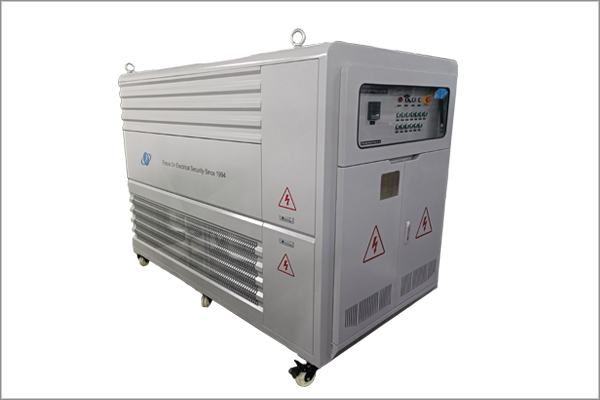Daily Maintenance of High-Power AC Load Banks
Time:2025-02-12
High-power AC load banks, as crucial equipment for power system testing and commissioning, have their stability and reliability directly impacting the accuracy of test results and the service life of the equipment. Therefore, it is essential to perform daily maintenance on high-power AC load banks.
1000kW AC load bank
I. Daily Inspections
Visual Inspection: Before starting up each day, check the load bank's casing for any damage, deformation, or corrosion, and ensure that the ventilation holes are unobstructed.
Connection Check: Inspect the power cords, signal lines, and other connections to ensure they are secure. Check for loose, oxidized, or burnt terminals.
Meter Check: Verify that the voltage, current, and power meters display correctly, that the pointers move smoothly, and that the scales are clear.
Fan Check: After startup, observe whether the fan operates normally and listen for any unusual noises or vibrations.
II. Regular Maintenance
Cleaning and Care: Clean the load bank monthly using dry compressed air or a soft brush to remove internal dust, especially from the heat sinks and fans. Ensure the power is off during cleaning to avoid damaging internal components.
Tightening Connections: Regularly inspect and tighten all electrical connections, including power cords, signal lines, and terminals, to ensure reliable contact and prevent overheating or faults due to poor connections.
Lubrication: For load banks with mechanical moving parts, such as adjustable resistors or switches, regularly apply lubricant to maintain smooth operation and extend service life.
Performance Testing: Conduct performance tests on the load bank every six months or annually. Use professional testing instruments to measure parameters such as voltage, current, and power to ensure accuracy and stability.
III. Precautions
Safe Operation: Always follow safety operating procedures when using the load bank. Wear insulated gloves and other protective gear to avoid electric shock accidents.
Environmental Requirements: Place the load bank in a dry, ventilated, and non-corrosive environment, avoiding direct sunlight and rain.
Load Matching: When using the load bank, select the appropriate load range based on the power of the device under test to avoid overloading and damaging the load bank.
Fault Handling: If the load bank malfunctions, stop using it immediately and contact professionals for repair. Do not attempt to disassemble or repair it yourself.
IV. Conclusion
Daily maintenance of high-power AC load banks requires consistent effort. Only through regular inspections, scheduled maintenance, and proper operation can their stable and reliable performance be ensured, their service life extended, and strong support provided for power system testing and commissioning.
News Recommendation
-
 2024-09-11
2024-09-11TRIUMPH LOAD EXHIBITING AT Enlit Europe 2024 -BOOTH 7.H08
-
 2023-04-21
2023-04-21TRIUMPH LOAD EXHIBITING AT DATA CENTER WORLD GERMANY 2023-BOOTH F909
-
 2023-04-06
2023-04-06TRIUMPH LOAD EXHIBITING AT ELECTRIC POWER TECH KOREA 2023 – Booth G109
-
 2022-05-05
2022-05-05What is the role of ac load bank for power supply?
-
 2022-05-05
2022-05-05What is the role of the load bank?


